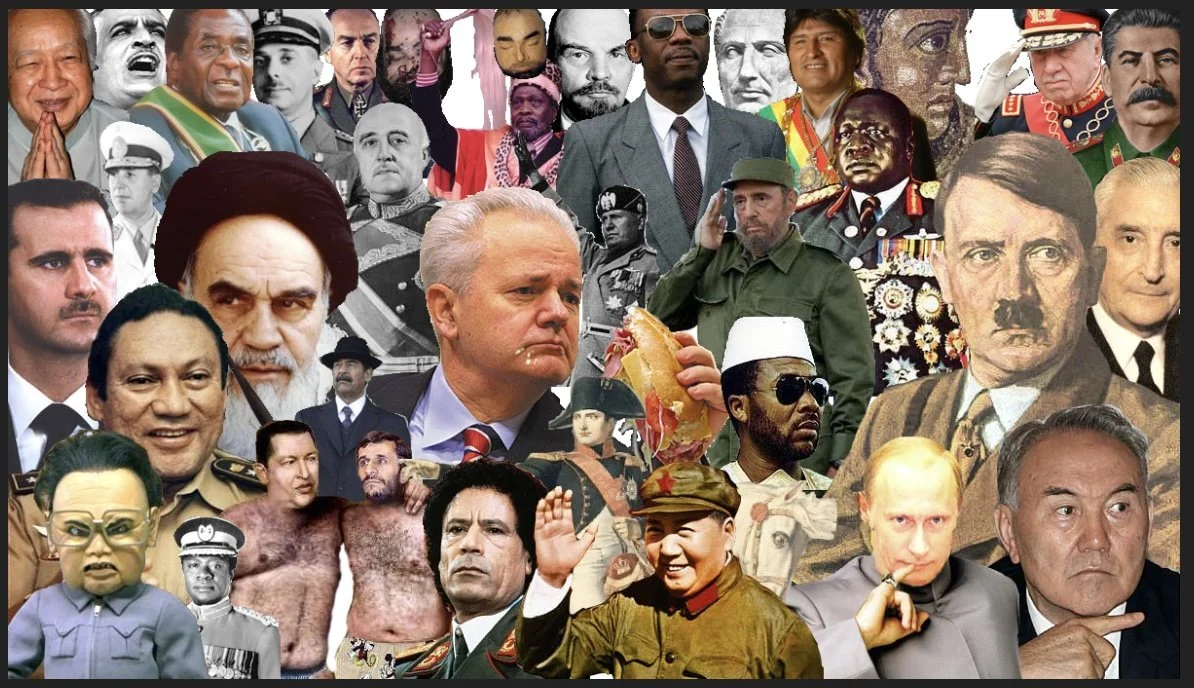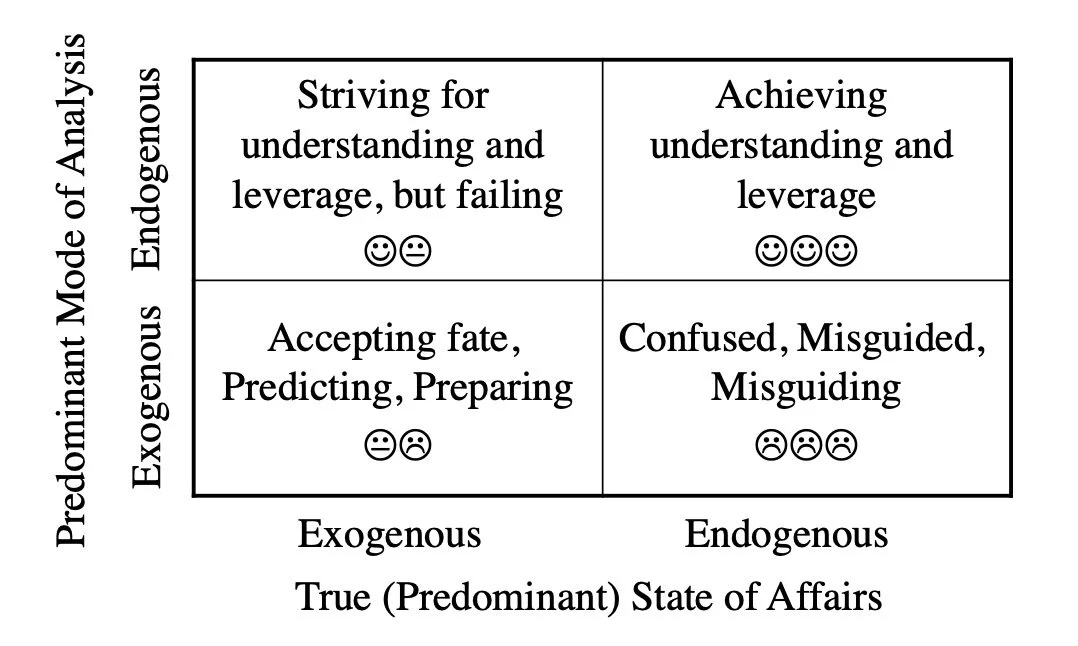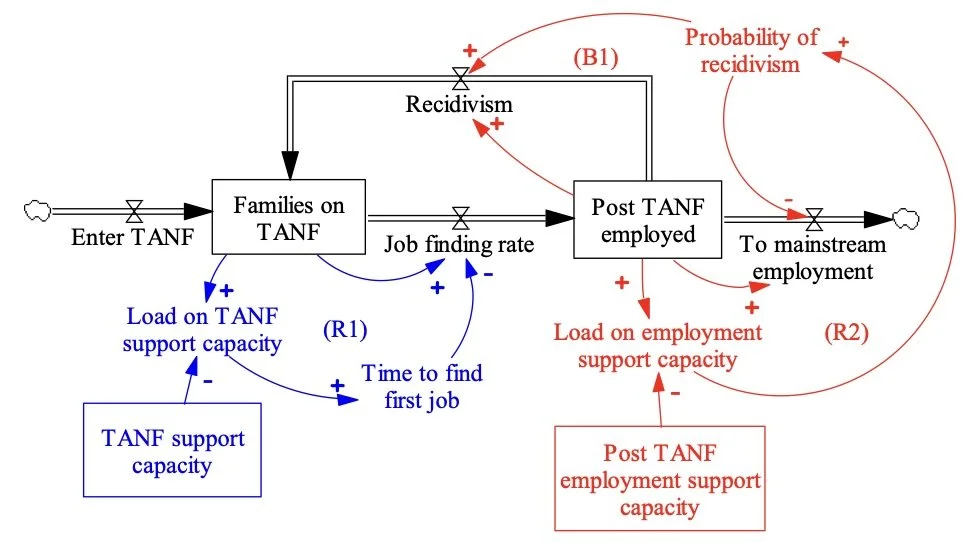Mixed Blessings: Valedictory Thoughts on System Dynamics Practice (2025)
Some of the greatest developments in our field contain Mixed Blessings: positives and negatives, good stuff and bad stuff, brilliant aspects and actual flaws. In this paper I will call them ‘Blessings’ and ‘Bugs’. The Blessings help us do our work, increase our skills, develop our insights, and expand our reach.
But sometimes Blessings can turn into Bugs. They can get in our way by appearing to be indispensable, by insisting on being used, by intruding in our work, by distracting us away from what really is going on, by cluttering our reports when they don’t apply, by confusing our audiences when something else would work better. And when they are actually, subtly, wrong.
Thought: Understanding is the point of everything we do. It’s a gift we can give. Conviction is not enough. The great Blessing of our field is helping people understand.
What Jay Didn’t Tell Us (2022)
Hidden Gems in the System Dynamics Practices of Jay W. Forrester
The works of Jay W. Forrester are numerous and deep. Beginning with Industrial Dynamics (1961) he was showing us and telling us how to take a stock-and-flow/feedback perspective to understand the dynamics of complex systems.
This note reveals a few of Jay's insightful bits of genius he practiced, but didn't talk about or write down. Some are forceful suggestions for practice; some are insights about dynamic systems or methods for understanding them; and the last is a challenging philosophical speculation, which, like the others, Jay never told us about.
Thought: Here’s a surprise practice Jay followed but didn’t tell us: Don’t publish ‘sensitivity tests’ . Use your model to tell compelling stories.
Can Systems Thinking be an Antidote
to Extensive Evil? (2020)
It is tantalizing to wonder if the breadth and rigor of systems thinking and modeling can help us avoid extensive evil (Minnich 2017). That is to say, if we think hard enough and employ all that we know of the structure and dynamics of complex systems, can we avoid the emergence of pervasive evil doing?
Most of us grew up ignoring feedback loops, perhaps being surprised and intrigued when we first saw them in things like self-fulfilling prophecies such as prejudice or the run on a bank. Yet causal loops are in the very nature of complex systems. Insightful thinkers implicitly, increasingly explicitly, make use of feedback thinking.
Thought: Great social scientists are feedback thinkers, and great social theories are feedback thoughts.
Building Confidence in Exploratory Models (2023)
Some of the classic tests for building confidence in system dynamics models do not work well for models not rigorously calibrated to data. Many of the classic tests do not go deep enough to build high confidence in a model-based investigation not using hard data for parameters or for fitting a model to a specific case. To instill as much rigor and quality as possible into such “exploratory models”, this discussion identifies several categories of concerns about simulation models not rigorously fit to empirical data, drawing on examples of high quality exploratory modeling work, including Forrester’s own classic works. It proposes guidelines and benchmarks for striving for the highest quality simulation work in the field, even for modeling work not extensively grounded in real-world data.
Thought: In exploratory modeling, different scenarios are something like goodness-of-fit tests of simulated model behavior with mental model behavior.
Growth of a Management
Science Field (2014)
A formal model of the dynamics of growth, stagnation, or decline of an emerging field is presented, followed by eleven scenarios and strategies that might affect those dynamics. The purpose of the model is to stimulate thought and conversation within the field of system dynamics about the growth of the field and to provide a bit of simulation-based grounding for those conversations.
The model presented here (2014) is an “exploratory” model (Homer 2007, 2013). Purposely, it has not been calibrated to the data of any management science field. The paper unfolds the model, explores eleven simulations crafted to yield understanding and insights, and ends with real-world insights about the growth of a field like ours.
Thought: Mentoring PhDs after the degree does two good things . It increases practitioner expertise and it increases practitioners !
Reflections on the Foundations of System Dynamics (2011)
Jay W. Forrester's original statement of the foundations of system dynamics emphasized four 'threads': computing technology, computer simulation, strategic decision making, and the role of feedback in complex systems. Subsequent work has expanded on these to expose the significance in the system dynamics approach of dynamic thinking, stock-and-flow thinking, operational thinking, and so on.
But the foundation of system dynamics thinking lies deeper than these and is often implicit or even ignored: it is the ‘endogenous point of view.’ The paper will begin with historical background, clarify the endogenous point of view, illustrate with examples, and argue that the endogenous point of view is the sine qua non of systems approaches.
Thought: The act of trying to govern / manage / control generates system dynamics of its own.
How Small Models Can Help the Public Policy Process (2009)
Abstract Public policies often fail to achieve their intended result because of the complexity of both the environment and the policy making process. In this article, we review the benefits of using small system dynamics models to address public policy questions. First we discuss the main difficulties inherent in the public policy making process. Then, we give two examples to show how small models can yield accessible, insightful lessons for policy making stemming from the endogenous and aggregate perspective of system dynamics modeling and simulation.
Thought: The third most cited paper in the System Dynamics Review thanks to lead authors Navid Gharffarzadegan and John Lyneis.
Loop polarity, loop dominance,
and the concept of dominant polarity
An ‘Archives’ paper from the System Dynamics Review, written in 1984, published in 1995.
Underlying the formal, quantitative methods of system dynamics is the goal of understanding how the feedback structure of a system contributes to its dynamic behavior. Understanding is captured and communicated in terms of stocks and flows, the polarities of feedback loops interconnecting them, and shifts in the significance or dominance of various loops. However, there is a conspicuous gap in our literature between intuitive statements about shifts in loop dominance and precise statements about how we define and detect such important nonlinear phenomena.
This investigation is an attempt to bridge that gap.
A Self-adjusting Minimum Wage (2005)
Congress should enact a ‘Maximum Compensation Ratio’
This OpEd was written in 2005. I hope to update the analysis to 2020+. Congress recently debated [2004] and rejected an increase in the Federal minimum wage. The defeat of the hike was not surprising -- Congress has raised the minimum wage only twice since 1980, the last time in 1997, and there are always strong feelings on either side of the debate. This time Democrats urged a near fifty percent increase, while Republicans expressed fears that such a rise would price minimum wage labor out of the market, unemployment would increase, and jobs would go wanting.
But it is time to recognize that the minimum wage is really a low leverage policy. There’s a much better way to accomplish the various goals people have for equity and efficiency in wages, and it involves not just the minimum wage folks, but high-paid executives too.
Thought: Stop pushing on a string..









